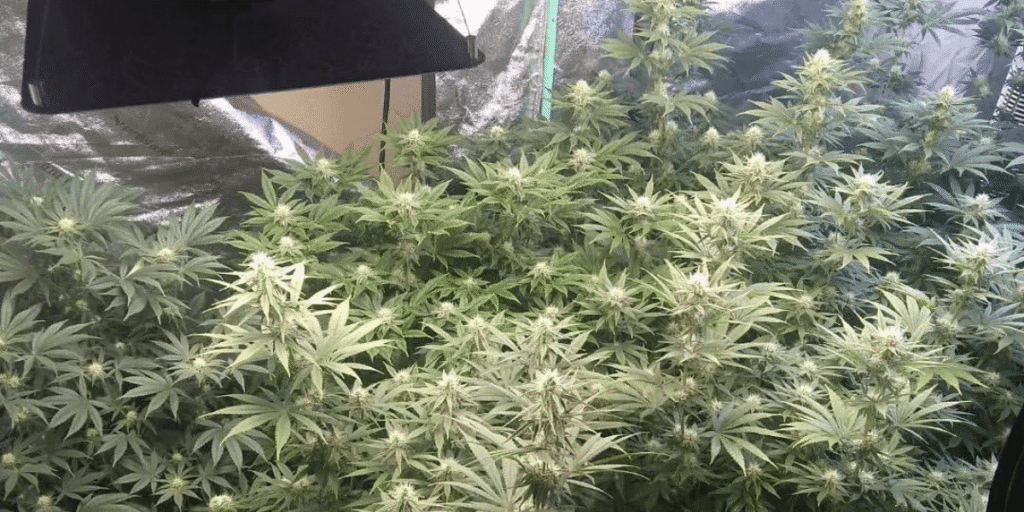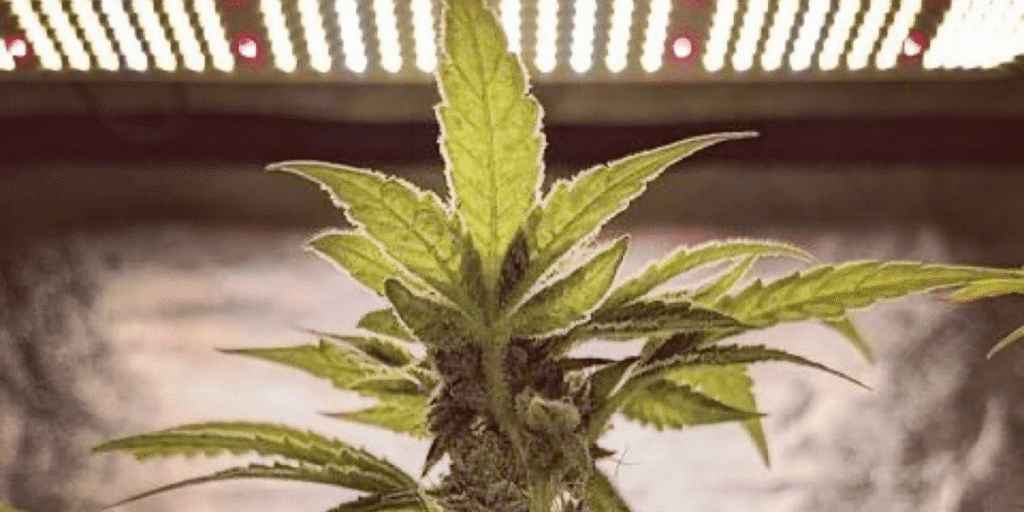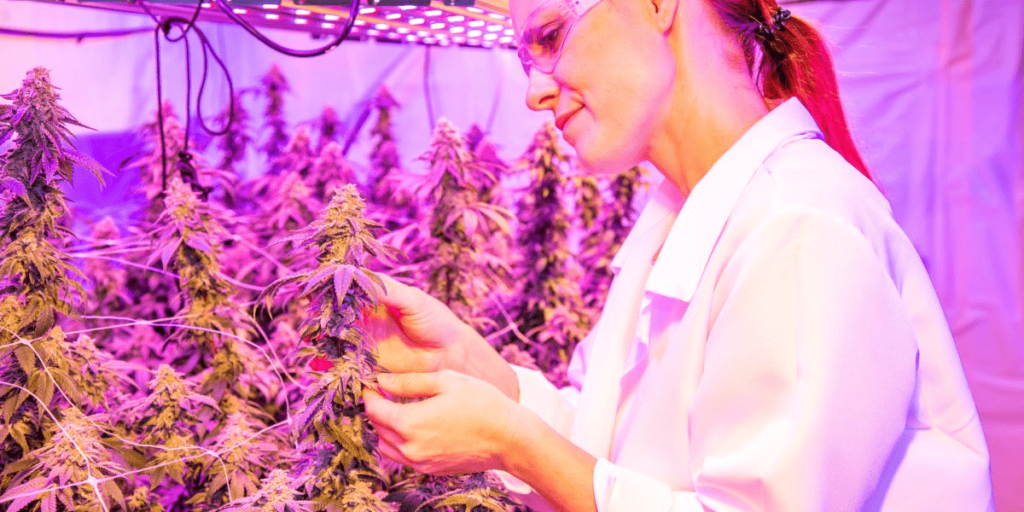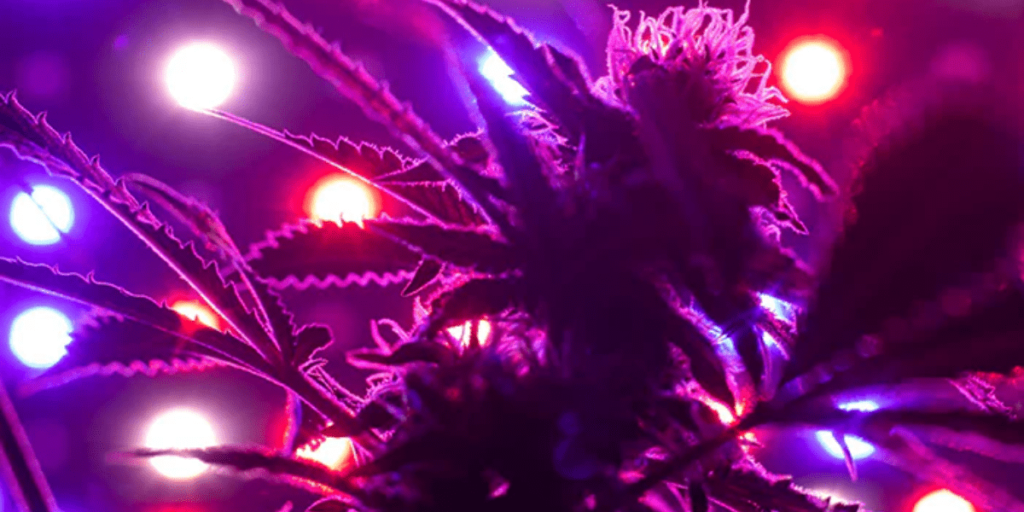Cannabis training methods are essential techniques used by growers to manipulate plant structure for better light exposure, increased airflow, and higher yields. Whether you’re a beginner or a seasoned cultivator, understanding and applying the right training method at the correct growth stage can significantly enhance your results.
In this guide, we’ll explore the science behind cannabis training, explain five proven training techniques, and provide tips on when and how to apply them effectively.
Why Cannabis Training Methods Are Essential for Growth
Cannabis naturally grows in a Christmas tree shape, with one dominant central cola and several smaller branches below. While this may work well outdoors under full sun, it’s inefficient in indoor grow rooms or tents, where light comes from above and is often limited in intensity and spread.
Training helps you:
- Improve light penetration to lower bud sites
- Promote uniform growth and canopy development
- Reduce the risk of mold and pests by improving airflow
- Increase the number and size of buds
- Control plant height, especially for indoor or stealth grows
Scientifically, training affects the plant’s hormone balance, especially auxins and cytokinins, which control how the plant grows upward versus outward. By guiding these hormones differently, training encourages side branches to grow stronger and produces more sites for flowers.
Preparing Cannabis Plants Properly for Effective Training
Before starting any training method, it’s crucial that your cannabis plants are healthy and well-established. Here’s what to prepare:
- Genetics: Choose high-quality, stable seeds or clones from reputable sources. Strains with vigorous vegetative growth respond best to training.
- Growing Medium: Whether you use soil, coco coir, or hydroponics, ensure it provides proper drainage and root aeration.
- Environment: Maintain temperatures between 20–28°C (68–82°F) and relative humidity around 50–70% in the vegetative stage.
- Lighting: Use full-spectrum grow lights (especially with strong blue light in veg) to promote compact, sturdy growth.Want to go beyond basic lighting? Learn how purple spectrum LEDs can influence cannabis morphology and boost results in our detailed purple light guide.
- Nutrients: Follow a balanced feeding schedule, avoiding overfeeding. A slight nitrogen boost during vegetative growth supports rapid recovery after training.
Start training your cannabis plants only after they have developed at least 4 to 6 healthy nodes and look strong enough to tolerate gentle bending or pruning. Once they’re ready, here are the five most effective training techniques you should know.

1. LST (Low Stress Training) Methods: Bending Cannabis Without Breaking
Low Stress Training is ideal for beginners and advanced growers alike. It involves gently bending stems to control plant shape without cutting or wounding the plant.
How Low Stress Training Improves Cannabis Growth
- Disrupts apical dominance, encouraging bushier growth
- Allows light to reach lower bud sites
- Increases the number of colas
- Reduces vertical height great for stealth or tent grows
Step-by-Step Guide to Performing LST on Cannabis Plants
- Start training when your plants have developed 4 to 6 nodes, usually around week 3 to 4 of the vegetative stage.
- Use soft ties or plant clips to secure the stems. Avoid wire or string that can damage the stems.
- Gently bend the main stem sideways and attach it to the rim of the pot or a stake.
- Every few days, re-bend any new vertical growth to maintain a flat, horizontal canopy.
- Monitor the thickness of the stems and adjust the ties regularly to prevent constriction.
Tips and Precautions for Successful Cannabis LST
- Never bend brittle stems. Warm them slightly by rubbing before bending.
- Always anchor the base of the plant to avoid uprooting.
- Combine with topping to double training effects (more on that below).
2. HST (High Stress Training) Techniques: Breaking Cannabis to Boost Yields
High Stress Training methods involve cutting or slightly damaging the plant to force structural changes. This includes topping, fimming, and super cropping.
Why Use High Stress Training in Cannabis Cultivation
- Boosts the number of colas significantly
- Redirects energy to multiple branches instead of a single top
- Can increase yield and even canopy development
Common High Stress Training Methods for Cannabis
- Topping: Cut the main shoot above the 3rd or 4th node to split the main stem
- Fimming: Pinch off ~75% of the new growth tip less precise but creates multiple tops
- Super cropping: Squeeze and bend a branch so its inner tissue is crushed, not broken, forcing thick callus formation and stronger stems
Detailed Steps for Topping Cannabis Plants Correctly
- Sanitize scissors with isopropyl alcohol
- Identify the node: Top above the 3rd or 4th node only after plant is well-established
- Cut cleanly, avoiding jagged wounds
- Allow 3–5 days of recovery before any further stress

3. ScrOG (Screen of Green) Cannabis Training: Maximizing Canopy Efficiency
ScrOG involves setting up a horizontal screen such as a mesh, net, or wire frame just above your plants. As the branches grow, you carefully weave and spread them across the screen to form a flat, even canopy that maximizes light exposure.
How ScrOG Enhances Cannabis Light Exposure and Yields
- Ensures equal light distribution across all bud sites
- Reduces wasted vertical growth
- Helps with air circulation and humidity control
Practical Guide to Setting Up ScrOG for Cannabis Plants
- Place a screen 8–12 inches above the base of the plant pot
- Begin weaving branches through the screen in early to mid veg
- Adjust branches daily to guide horizontal growth
- Stop training ~1 week before switching to flowering
ScrOG works best when growing a small number of plants with extended vegetative periods. This method is popular for medical cannabis growers or strains that respond well to canopy training, as it helps maximize light exposure and yield from limited space.
4. SOG (Sea of Green) Cannabis Method: Prioritizing Quantity Over Size
Sea of Green (SOG) is a cultivation method that focuses on growing many small plants densely packed together, with an early switch to the flowering stage. This approach aims to produce quick harvests by maximizing space and minimizing vegetative growth time.
Key Features of Sea of Green Training in Cannabis Cultivation
- Plants are typically flipped at 2–3 weeks, reducing veg time
- Most plants produce a single main cola
- Perfect for perpetual harvest setups
Best Practices for Implementing SOG in Cannabis Growing
- Use clones, not seeds uniformity is crucial
- Space plants closely (15–25 cm apart)
- Focus on root health and vertical light penetration
SOG is often used in commercial or discreet grows where a fast harvest cycle is prioritized over the yield from each individual plant.
5. Mainlining and Manifolding Cannabis: Achieving Symmetrical Growth
Mainlining is an advanced method combining topping, LST, and symmetry. The goal is to build a plant with equal-sized branches radiating from a central hub.
Benefits of Mainlining Cannabis Training Methods
- Even nutrient distribution
- Perfect canopy balance
- Multiple colas with identical growth conditions
Basic Steps to Mainline Cannabis Plants Effectively
- Top the plant above the 3rd node
- Remove all other growth below that node
- Train the two new main arms outward, using ties
- Repeat for 4–8 main branches, keeping spacing symmetrical
Mainlining extends veg time but pays off with well-balanced, easy-to-manage plants and high-quality bud uniformity.
Cannabis Training Methods Timeline: When and How to Train
| Growth Stage | Training Techniques | Notes |
|---|---|---|
| Seedling (Week 1–2) | None | Focus on root development and light cycles |
| Early Veg (Week 3–5) | LST, Topping (first) | Start when plants have 4–6 nodes |
| Mid Veg (Week 5–7) | LST, Super Cropping, ScrOG | Maintain even canopy and healthy growth |
| Late Veg (Week 7–9) | ScrOG final shaping, Mainlining | Allow recovery before flowering |
| Early Flower (Week 10) | Minor defoliation only | No major training, focus on bud formation |
Before diving into training, it’s crucial to handle your seedlings with care to avoid transplant shock, which can stunt growth and reduce yields. If you’re new to this step, check out our detailed guide on how to transplant cannabis seedlings correctly to give your plants the best start possible.
Common Questions About Cannabis Training Methods (FAQs)
Q1: Can I use training techniques on autoflower strains?
Autoflowers have a shorter vegetative stage and less recovery time, so it’s best to use only gentle methods like Low Stress Training (LST). Avoid topping or super cropping because these high-stress techniques can stunt their growth and reduce yield.
Q2: When should I stop training my cannabis plants?
It’s important to stop all major training about one week before switching to the flowering stage. This allows the plant to recover fully and focus energy on developing healthy buds without additional stress.
Q3: What should I do if I accidentally snap a branch during training?
If a branch breaks, try to gently align the broken parts and support them with plant tape or a splint. Cannabis plants are quite resilient and often heal well if supported properly, usually within a week.
Q4: How long do plants need to recover after training?
Recovery time depends on the training intensity but generally ranges from 3 to 7 days. Watch for signs like new healthy growth and leaves returning to a normal posture to know when your plant has bounced back.
Q5: Is training really worth the extra effort?
Yes. When done correctly, training can increase your yields by 20% to 50% and improve light penetration and airflow. It also helps produce healthier, more manageable plants. However, it requires patience and attention to avoid stressing your plants too much.
Final Thoughts on Incorporating Cannabis Training Methods into Your Grow Strategy
Training your cannabis plants is more than just a way to increase yields. It’s about learning how your plants respond to different techniques, adjusting your approach based on their growth, and creating conditions that promote healthy, vigorous development.
With patience and careful observation, you’ll find the training methods that suit your specific plants and growing environment best. Over time, this hands-on experience will help you achieve healthier plants and more consistent harvests.
Actionable Steps to Start Cannabis Training Methods Today
Want to take your cannabis growing skills to the next level?
Follow us on Instagram @Greenfuturelight,we’re excited to see how your plants thrive!
Looking for more tips on hydroponics, lighting, and plant care?
Explore our full range of guides and products at www.greenfuturelight
Ready to boost your yields with the best LED grow lights?
Check out our Grow Light Collection designed for all grow setups.
Have questions or need personalized advice?
Contact Us expert team for a free consultation today!
Keep nurturing your plants and enjoy the harvest!



